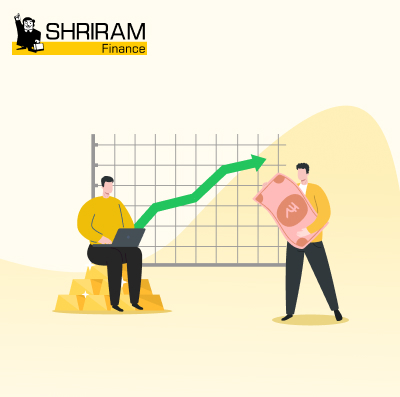The introduction of Equated Monthly Instalments (EMIs) has brought about a transformation in people's spending patterns, leading to changes in consumer behaviour. This has resulted in increased spending compared to the pre-EMI era, often exceeding one's financial capacity. The availability of instant credit options allows individuals to make purchases without immediate payment, causing a growing reliance on loans and financing to afford goods and services.
The primary rationale behind this shift is that EMIs enable individuals to avoid the burden of a substantial upfront cash outlay and instead facilitates them with a repayment period. However, this convenience often leads to a debt trap, which many individuals only realize when the combined EMIs begin to significantly impact their income and budget.
Key Highlights:
- Understanding the importance of living debt-free for a healthy financial future
- Exploring various types of debt and their impact on personal finances
- Understanding strategies to prioritize and pay off debt effectively
- Highlighting the benefits of budgeting and creating a debt repayment plan
Achieving financial freedom and eliminating debt often becomes a priority for many individuals. By carefully planning and managing expenses, it is possible to steer clear of the debt trap. If you're seeking guidance on becoming debt-free within a five-year timeframe, this comprehensive guide provides valuable insights and empowers you to navigate your way out of debt effectively. Discover the optimal strategies and practical steps to regain control of your finances and work towards a debt-free future.
Prepare a debt list
The first thing you should do to become debt-free is to find out how much money you owe. Make a list of all the debts you have, including the loans and credit card balances. This will help you understand the full extent of your situation. Instead of just writing down the amounts, include details like why you borrowed the money, how much you pay each month, when it's due, and how much interest you're being charged. This information will give you a clear idea of your financial situation and help you decide which debts to tackle first.
Prioritise your debts
Debts are not always bad. It is considered good to take debt for the purpose of creating an asset. Home loans, loans for education or business, etc., facilitate your growth. However, if you are in debt because of credit card bills or personal loans taken for non-beneficial purposes, it is better to pay them at the earliest.
You might have noticed that the interest rates on these debts are very high compared to regular loans. Credit card companies often charge around 20%-30% interest each year. Personal loans can also be costly. To avoid getting into financial trouble, create a list of your debts and prioritize them. If you are already debt-free and want to stay that way, be mindful of your spending and only buy things you truly need. If you decide to use EMI options for purchases, make sure they are necessary. Remember, the things you buy now with EMIs can impact your future finances. By being careful with your spending and prioritizing wisely, you can maintain a debt-free lifestyle.
Repay debts at higher interest rates
The first step to becoming debt-free is to focus on high-interest debts. When you have loans with higher interest rates, the monthly payments (EMIs) are also higher. So, it's a good idea to prioritize paying off these debts first. This includes outstanding credit card bills, personal loans, and other unsecured debts. Save some money and use it to make extra payments on these loans.
When you make extra payments, the amount you pay will be taken off the total amount you owe. This can lead to two benefits: either you'll be able to pay off the remaining loan faster, or it will reduce your monthly payments (EMIs). However, it's essential not to use all your savings for these extra payments. Always keep some emergency funds aside. This way, if an unexpected expense arises, you won't need to take on new debts and fall back into the debt cycle. Set aside a fixed portion of your income for these extra loan payments.
For example, let's imagine you have an outstanding credit card bill of ₹1,50,000, an outstanding personal loan of ₹80,000 and a home loan of ₹25,00,000. Here, you should start with credit card repayment as a priority. This is because the interest rate is higher on credit card loans than your other debts, and secondly, it would affect your credit score.
Once you get free of credit card debt, you will feel relaxed and debt-free. Your EMIs will reduce, and now you can focus on personal loans, which is the second-highest interest-bearing loan. A home loan creates an asset, and interest rates are usually lower. However, the EMI may be huge primarily because the loan amount sanctioned is huge. This is one of the cheapest loans available, so you can consider it as a priority for the future.
Plan, follow, repeat
Keep doing the extra payment method until you have paid off all your high-interest loans, and you become debt-free. In the beginning, it might be challenging and slow because, apart from your regular EMIs, you'll also need to set aside money for extra payments. To save more, try cutting down on unnecessary spending. As you continue, you'll save more because your EMIs will decrease, and this process will become more effective over time. Eventually, you'll reach a point where most of your loans are paid off.
Avoid falling into this trap again
Once you realise you are getting out of this debt trap, be very careful not to fall into it again by forming the opinion that you can borrow now as you are debt-free. Sadly, this way of thinking pushes people into another cycle of debt. Instead, try to concentrate on investing your money. By growing your investments, you can increase your overall wealth and income.
The way you spend your money will determine your financial situation. Many people tend to spend their earnings on things they don't really need, along with other random expenses, and only save whatever is left. This often results in having no savings and falling into debt traps.
We should instead focus on saving and investing. Make it a rule to allocate at least one-third of your income to savings and investments. Spend your money on what is essential. The remaining amount can be used for your other needs and luxury items. Soon, you will notice an increase in your assets, which will also increase your income and net worth.
It's not impossible to become debt-free. Many people are so overwhelmed by debt that they feel there is no way out. By following the advice mentioned earlier, you can achieve a debt-free life within a few years. If you are a young person, it's best to try and avoid getting into debt as much as you can.
When you take on debts during your early years, like in your 20s, it means you'll be spending your 30s and 40s paying EMIs to become debt-free. So, it's better to be cautious and avoid unnecessary debts early on to have a smoother financial journey later in life.
By the time you reach your late 40s and become debt-free, you realise that the majority of your work life is already over, and in a few years, you will retire. This realisation at a later stage in life is painful for many. Therefore, try to remain debt-free through sound financial investments and proper planning.
































